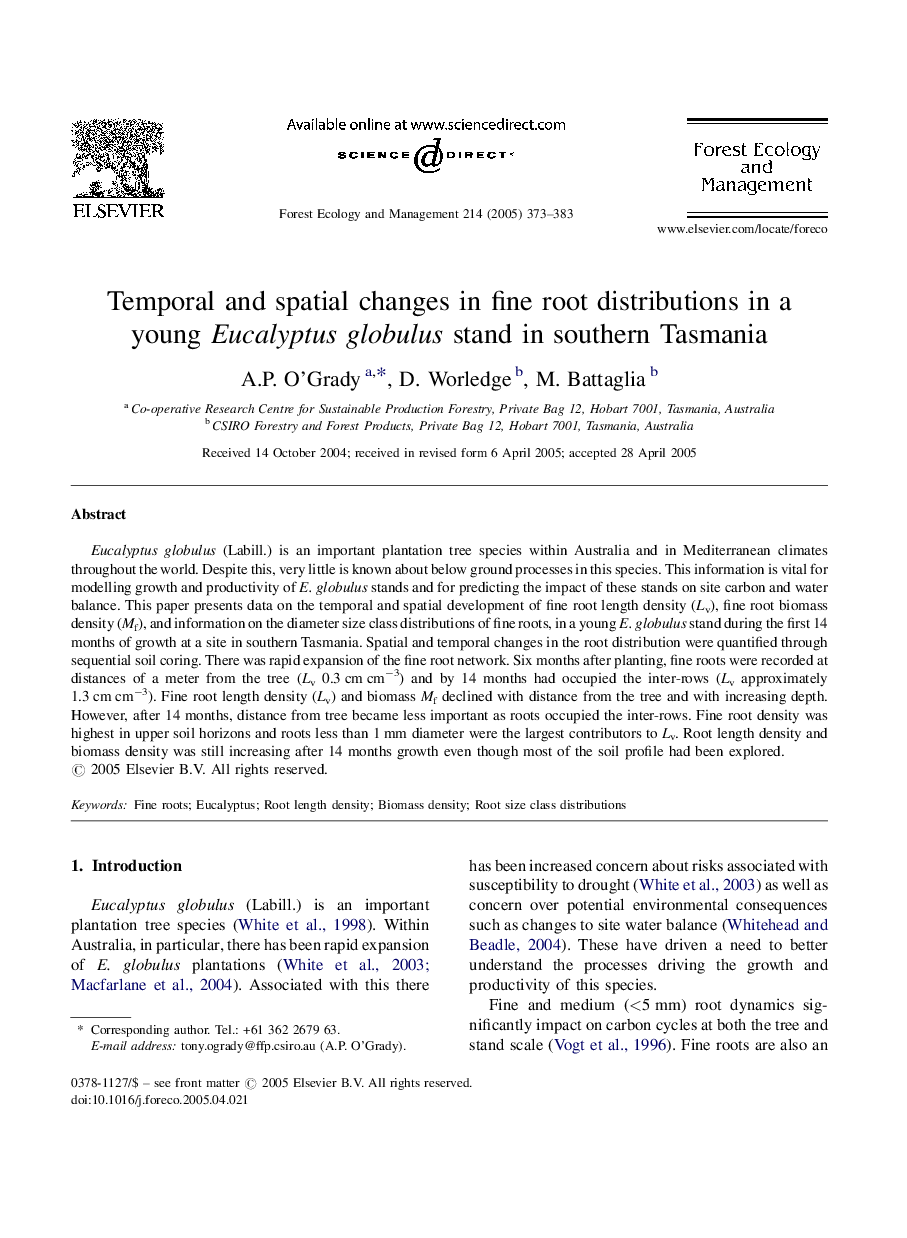| Article ID | Journal | Published Year | Pages | File Type |
|---|---|---|---|---|
| 9620253 | Forest Ecology and Management | 2005 | 11 Pages |
Abstract
Eucalyptus globulus (Labill.) is an important plantation tree species within Australia and in Mediterranean climates throughout the world. Despite this, very little is known about below ground processes in this species. This information is vital for modelling growth and productivity of E. globulus stands and for predicting the impact of these stands on site carbon and water balance. This paper presents data on the temporal and spatial development of fine root length density (Lv), fine root biomass density (Mf), and information on the diameter size class distributions of fine roots, in a young E. globulus stand during the first 14 months of growth at a site in southern Tasmania. Spatial and temporal changes in the root distribution were quantified through sequential soil coring. There was rapid expansion of the fine root network. Six months after planting, fine roots were recorded at distances of a meter from the tree (Lv 0.3 cm cmâ3) and by 14 months had occupied the inter-rows (Lv approximately 1.3 cm cmâ3). Fine root length density (Lv) and biomass Mf declined with distance from the tree and with increasing depth. However, after 14 months, distance from tree became less important as roots occupied the inter-rows. Fine root density was highest in upper soil horizons and roots less than 1 mm diameter were the largest contributors to Lv. Root length density and biomass density was still increasing after 14 months growth even though most of the soil profile had been explored.
Related Topics
Life Sciences
Agricultural and Biological Sciences
Ecology, Evolution, Behavior and Systematics
Authors
A.P. O'Grady, D. Worledge, M. Battaglia,
